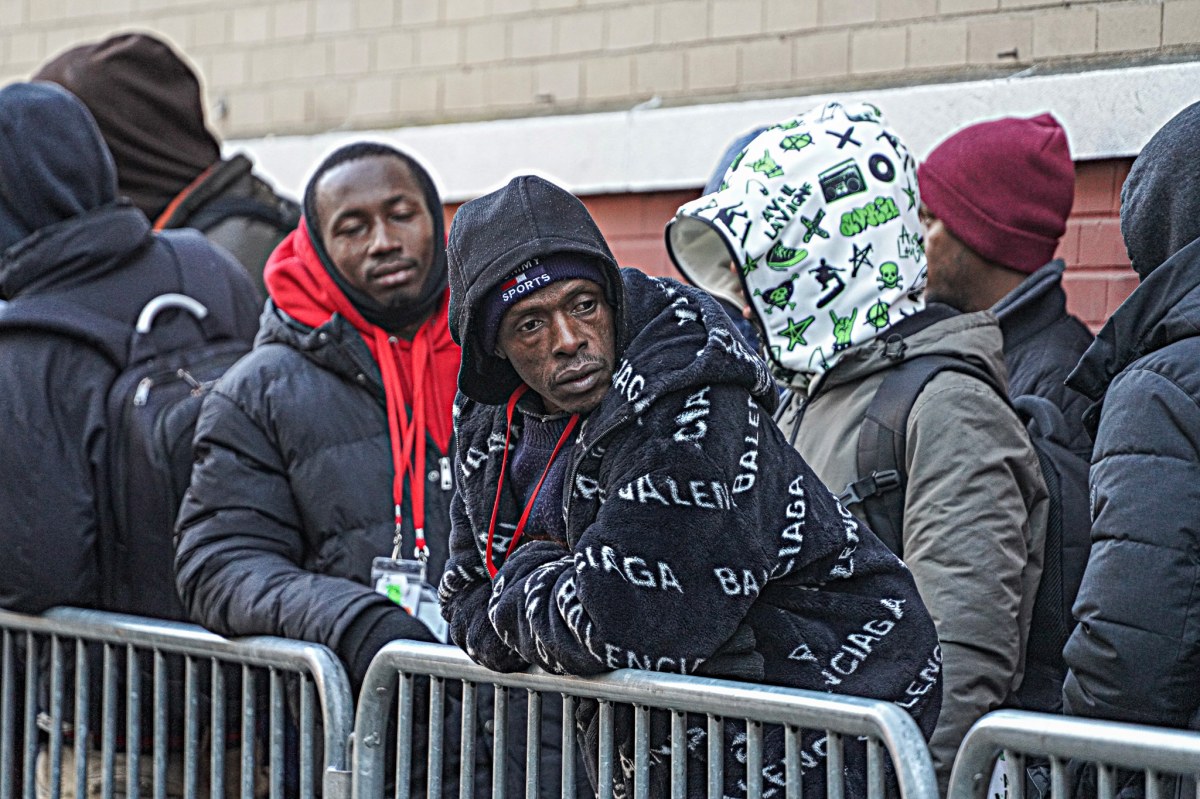Fashion
Report from Lander suggests NYC’s migrant shelter stay limit enforced in ‘haphazard’ fashion, ‘disregarded humanity’ | amNewYork

City Comptroller Brad Lander released a report finding Mayor Eric Adams’ 60-day shelter limit for migrant families was implemented in a ‘haphazard’ fashion. Thursday, May 9, 2024.
Photo by Ethan Stark-Miller
City Comptroller Brad Lander on Thursday excoriated Mayor Eric Adams’ 60-day shelter stay limit for migrants in a new report finding the policy has been implemented in a “haphazard and arbitrary” fashion, without proper guidelines or staffing.
Lander, during a May 9 news conference outside the Row Hotel migrant shelter, said that the policy did not live up to its own goals.
“This is not a policy designed or implemented to help families achieve stable housing and self-sufficiency and integrate into our city,” Lander said. “It was a policy designed to churn people through a system, to subject them to screening after screening, and to push them out of the shelter system with no regard for where they landed, with no regard for the impact on their kids’ education.”
The comptroller’s report compiles the findings of an investigation into the 60-day rule launched on the same day in January when the first migrant families were evicted from shelter under the policy. The Adams administration first announced the rule last fall, following the enactment of a similar policy for single adults that gives them just 30 days in shelter.
City Council Member Alexa Aviles (D-Brooklyn), who chairs the Committee on Immigration, echoed that the 60-day rule is designed to push migrants out of shelter, rather than help them.
“This policy was simply made to push people out, to disregard their humanity to disregard their experience, but to make them so uncomfortable, that they would self-select to move on despite the real challenges that face them,” Aviles said.
A ‘tool in our very limited toolbox’

City Hall spokesperson Kayla Mamelak responded to the report in a statement, using the administration’s frequent refrain that the policy has helped it bring down the city’s shelter census — which has exploded since the start of the migrant crisis over the past two years.
“Thirty-and-60-day notices are one tool in our very limited toolbox to help migrants to exit shelter because, as we have repeatedly said, New York City is long past its breaking point,” she said.
Mamelak added that nearly half of the families given the notices have left the shelter system as well as over 50% of all migrants who have been in the city’s care, “without a single migrant family with children being forced to sleep on the street.”
There are still 65,600 migrants in city shelters, out of the over 195,000 who have arrived in the five boroughs since spring 2022.
Among Lander’s findings were that the administration has few written policies and procedures governing the 60-day rule, and that “limited” case management is available to migrants being pushed to leave shelter.
Furthermore, the report uncovered that families with elementary school-aged children who reapply for shelter are not placed in city Department of Homeless Services (DHS) facilities — where most migrant families have been housed thus far.
Nothing written down?
The report found the lack of written policies was evident in areas such as exemptions for pregnant migrants. While Mayor Adams had specifically pledged to give pregnant people in their third trimester and those with newborn children a reprieve from the shelter cap, Lander’s office found that such a policy was “not actually established.”
“It was not written down, it was not promulgated, it was not given to the staff or contractors,” Lander said.
Additionally, the report found, the city does not have written rules for reasonable accommodations to the shelter stay limit — including who is eligible for accommodations; how migrants can request them; and how to flag those seeking them.
Lander’s study also uncovered a lack of guidance around the transfer of migrant families’ belongings and mail when they are booted from shelters.
Staff were also not properly trained on how to execute the 60-day rule, Lander’s office reported. And the notices of the limit handed to migrants themselves do not provide any information on the city’s long-standing right-to-shelter policy or housing options, mail and personal belongings — the report says.
When it comes to case management, the administration has repeatedly said that it works “intensively” with migrants to secure more stable housing so they can exit the shelter system. But Lander’s report found the city mainly focuses on getting migrants out of the city’s care and does little to actually assist them in finding other housing once they leave.
“Our investigators found that there’s very little case management of any sort,” Lander said. “What there essentially are, are repeated screenings to insist that you must have somewhere else to go over and over and over again.”
City Hall contends that it does have clear written policies around pregnant migrants, reasonable accommodations and exit planning and that it trains staff in those areas. However, when pressed by amNewYork Metro, it did not immediately share the policies.
Additionally, the mayor’s office said over 80% of children whose parents have had their notices come due have been able to stay in their original schools.
The comptroller’s report also contains several recommendations for improving the 60-day policy, including eliminating it. Short of that, Lander advised that the city should establish clearer policies and procedures, beef up training and case management and better track migrant families who leave the system.
Mamelak insisted that the city is already doing much of what Lander recommended, but that “any ideas on how to improve our herculean work are welcome and will be considered.”







